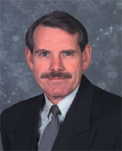- Track your orders
- Save your details for express checkout
×
Registrant Details
Use this window to add all the registrants you wish to register on behalf of. If you want to attend the course also, ensure you add yourself as one of the registrants. Make sure you press "Save" after adding each new registrant.
Registrant 1
First name
Last Name
Email Address
Username ( if known )
NZLS Member or Associate Member?
1x Registrant
Subdivisions - getting it right
Published: 10-11-2006
Author(s): Tim Jones, Pru Steven
Pages: 210
Price From
NZ $70.00
This book is only available in PDF format
Published: 10 November, 2006
Pages: 210
The complexity of subdivision
Subdivision of land is a complex process. However, as a process it can be broken down into its component parts. The core part of the process is the period from implementation of the resource consent through to the titles being issued for the subdivision. That part of the process has been identified in a flow diagram which has been prepared for practitioners to use for their own purposes, for discussion with clients and for internal training with staff. It was prepared in conjunction between the Property Law Section and the New Zealand Institute of Surveyors to better identify where lawyers and surveyors interact in that core part of the subdivision process. That diagram and the notes relating to each of the stages of the process are attached as Appendices but are also available on the Property Law website (www.propertylawyers.org.nz ).
As a complex process, subdivision requires careful planning and gathering of resources. The planning is inter-woven with the resources which naturally enough include the land, funding, and expertise. Different expertise is required at different times. However, developers need to build up around themselves a team of experts with a variety of areas of knowledge who have an influence on the subdivision process. They must be prepared to use those experts in a collaborative and team environment. Working together as a team will produce the best and the most effective result. There are many examples of developers using experts sequentially or isolated from each other which leads to poor, expensive and/or badly planned development.
Building the team is an important requisite to successful subdivision and land development. The lawyer as part of that team needs to acknowledge this fact and be part of the team. In fact, lawyers acting for developers can be the central and pivotal part of the team if their expertise is broad enough and/or their organisational skills are good enough to assist in driving the team forward. For this, the lawyer needs to have a broad knowledge of the subdivision process, an understanding of the role of each member of the team and a willingness to take charge.
 |
 |
| Tim Jones Glaister Ennor Auckland |
Pru Steven Goodman Steven Tavendale & Reid Christchurch |
Questions?
You might also be interested in ...
Property Law Conference 2010 - in a changing world
Publication Date: 14-06-2010Authors: David Bigio, Rt Hon Justice Blanchard, Ian Campbell, John Greenwood, Prof Mark Henaghan, Greg Kelly, Niamh McMahon, Denham Martin, Greg Towers, Phillip Walker, Stuart Walker, Michael Weatherall
Property Law Conference 2008 - Looking to the future
Publication Date: 16-06-2008Author(s): Stuart Walker, John Harkness, Mark Henaghan, Helen Melrose, Robert Muir, John Greenwood, Duncan Webb, Murray Gilbert, Anne Wilson, Pedro Morgan, Andrew Petersen, Jim Guest, Jacqui Sibbald, Philip Blank, Anna Buchly, John Clark, David Chisnall, Dave Kelly, Tomas Kennedy-Grant KC, John Meads, Phillip Merfield, Graeme Olding, Stuart Robertson, Phil Shannon, Willy Sussman, Vaughan Underwood, Sam Wimsett, Jonathan Flaws
